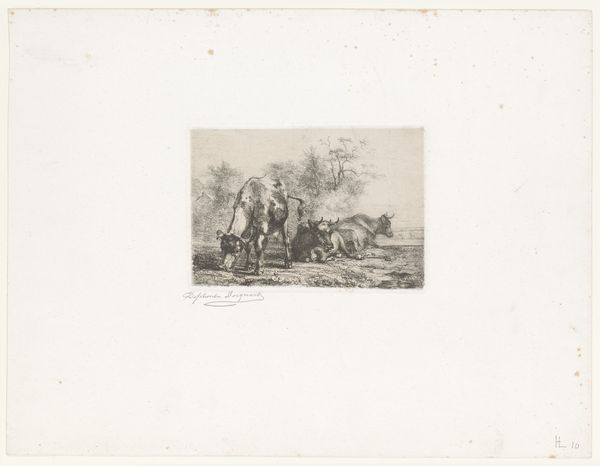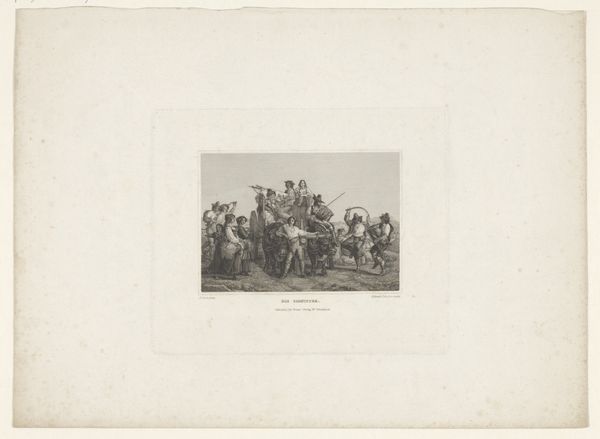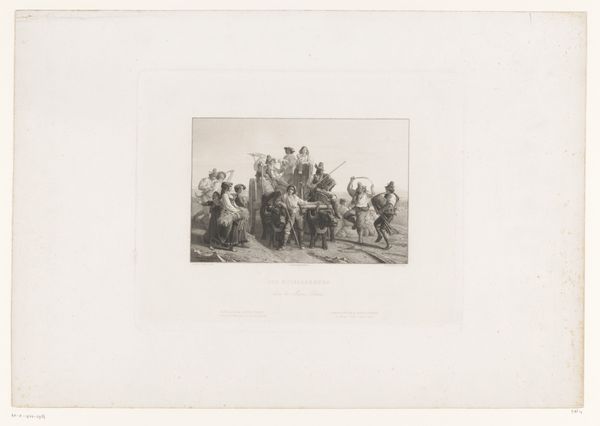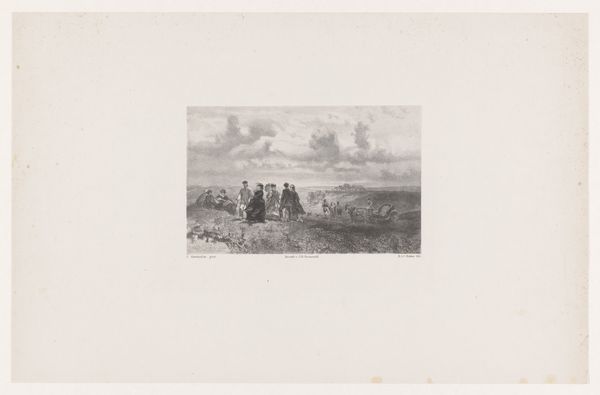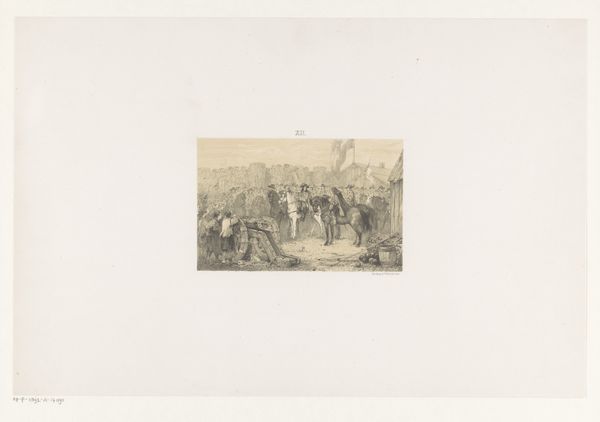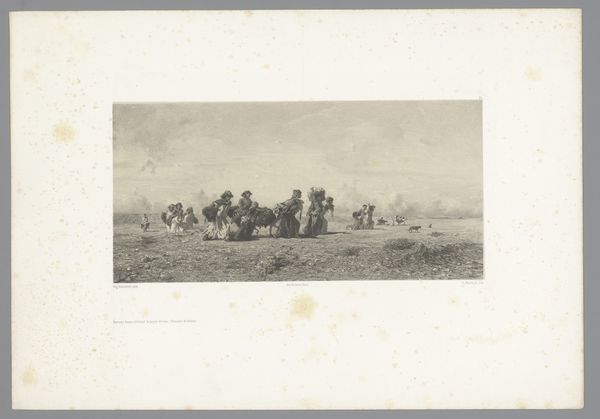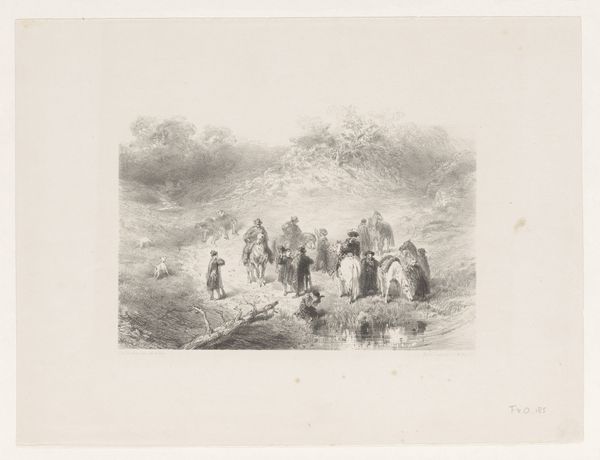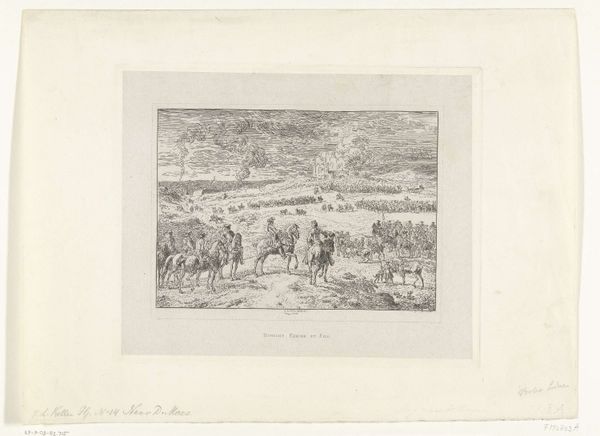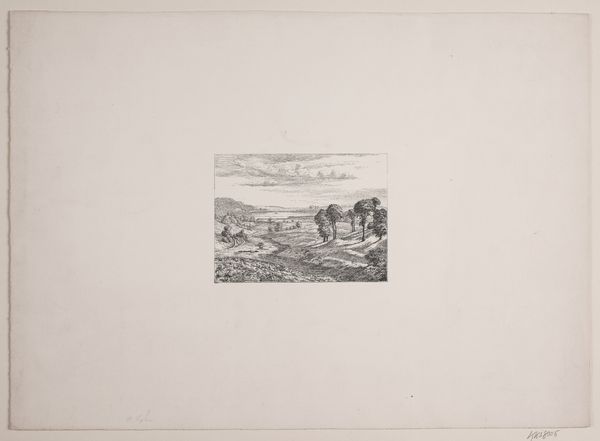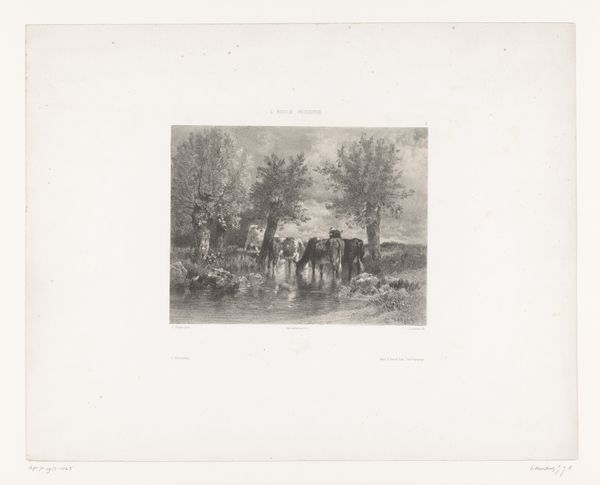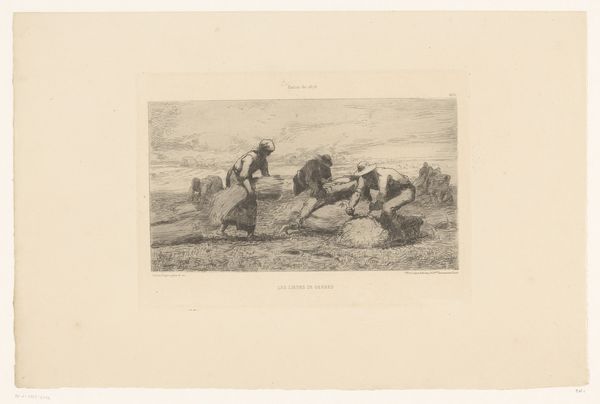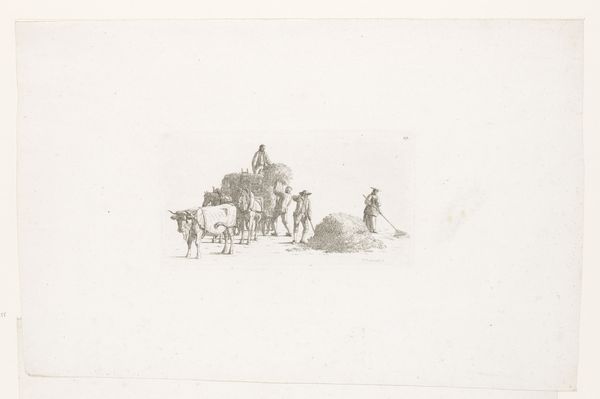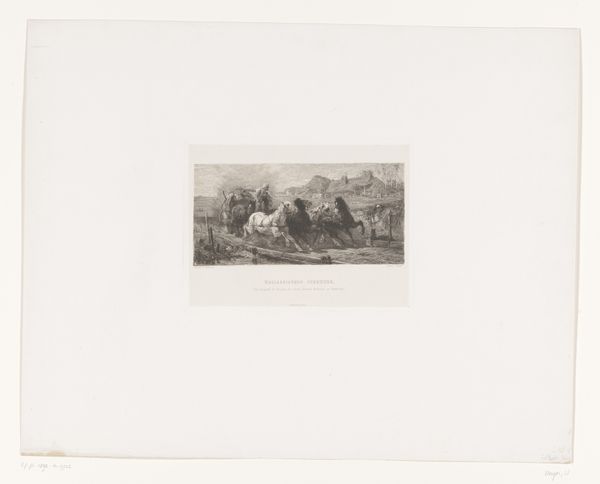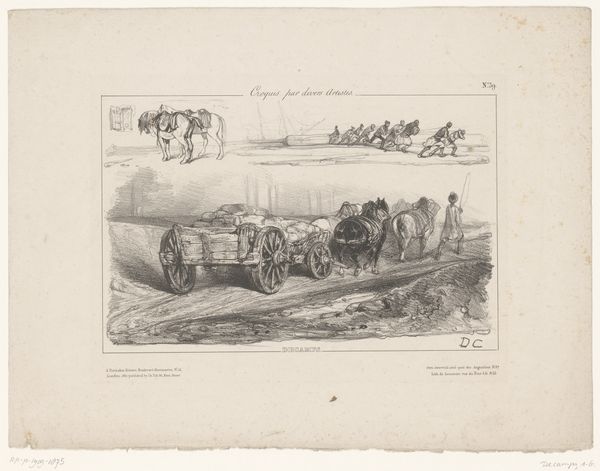
Dimensions: height 95 mm, width 144 mm
Copyright: Rijks Museum: Open Domain
Johann Kaspar Eissenhardt etched this landscape with riders in the 19th century. The figures on horseback immediately evoke a sense of journey, a motif deeply embedded in our collective consciousness. Horses, for millennia, have been symbols of power, freedom, and mobility, carrying not just people but also narratives of exploration and conquest. Consider how the horse appears in ancient Greek friezes, embodying martial prowess, or in the nomadic cultures of the Steppe, representing a way of life. This symbol is deeply rooted in the human psyche, tapping into primal desires for movement and control over one's destiny. Here, it is further connected to the idea of passage. The riders and horses are positioned in the foreground, possibly seeking shelter in the farm house to the right, generating a sense of hope, of reaching a safe place. But what does this safety represent? Is this print a recollection of the artist's past, a moment of comfort within war? As this image shows, these emotional and psychological depths can speak to us on a subconscious level. This symbol resurfaces, constantly evolving and taking on new meanings in different historical contexts.
Comments
No comments
Be the first to comment and join the conversation on the ultimate creative platform.
